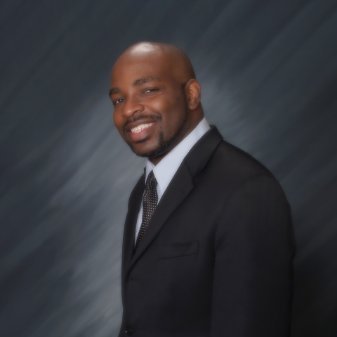Industry Insights
June 23, 2016
Nsahlai: 10 Steps to Resolve WC Cases Quickly, Efficiently, Cost-Effectively
- National
- - 5 shares
Despite the advent of the much-talked about and ballyhooed SB 863, the resolution of whether an injury arose out of the course of employment issues — as opposed to medical treatment disputes — remains of critical importance. And so it will continue to be, once SB 863’s provisions become law.

Emmanuel Nsahlai
Over a decade of litigating workers’ compensation matters has taught me that the prohibitive costs on any workers’ compensation claim file are unlike what most lay persons may think to be settlement payouts, the medical costs. Further, the longer a case lasts, the greater the costs of the claim file. In fact, applicant attorneys sometimes sneer at me with the following line during settlement discussions: “A workers’ compensation case is like good wine. It gets better with time.”
The point is, in WC, costs from a defense perspective invariably increase the longer a claim file stays open. These may include medical (treatment and diagnostics) costs, indemnity, med-legal costs, defense costs and more. The system is permeated with applicant-favorable medical providers who are only too eager to provide never-ending treatment, in addition to overly generous tests and diagnostic studies, to alleged injured workers.
From the perspective of a insurance carrier, third-party administrator or the self-insured, the question is: How can I quickly, efficiently and cost-effectively resolve any workers’ compensation claim?
Denied Claims
1. Once a claim form is received, I recommend accepting or denying the case within five to seven business days of receipt. Thus, all calls to the employer, employee if unrepresented, or medical providers (if any) should be made, in addition to the determination on whether to accept or deny the case. A quick decision is beneficial because not only does it speed the case along in virtually all aspects, it also avoids liability for medical treatment while investigations on whether to accept the case are ongoing.
2. If the case is accepted, immediately refer the applicant to a medical provider network in order to keep medical costs reasonable.
3. If the case is denied, immediately issue the denial.
4. If the applicant is represented, whether the case is accepted or denied, refer the file out to a defense attorney for further legal case management.
5. Provide the following specific instructions to the defense counsel in order to close the claim quickly, efficient and cost-effectively:
- Within five days of receipt of the file, object to the most recent treating report (if unfavorable and/or not a permanent, and stationary, report) in order to initiate the dispute resolution procedures of L.C. 4061 and L.C. 4062. I usually do this as part of my opening letter of representation to the applicant’s attorney.
- Schedule the applicant’s deposition as soon as possible. In my experience, particularly for low-level injuries/low-income injured workers, a deposition provides an excellent opportunity for settlement because of the face-to-face interaction with the applicant’s attorney.
6. The defense attorney, prior to the deposition, should write a letter to the applicant’s attorney, specifically requesting that the deposition-appearing attorney have settlement authority. It is also a good idea to make a settlement offer which, by state bar rules, must be forwarded to the applicant.
7. Seek a settlement at the deposition, if possible. I have found the following to be an interesting tactic: When settlement negotiations fail, note it on the record, as well as a brief recap of the settlement offer made and rejected, and that the defendant remains open to further settlement discussions. This enables applicants to know that they may end their case for a lump fee by accepting our offer on the record or by making a reasonable counteroffer. Sometimes, I get calls from applicant attorneys (probably nudged on by their clients) a few days after the deposition in order to further settlement talks.
8. If a settlement is not possible at the deposition, a few options exist for quick, efficient, cost-effective legal case management, depending on whether the case is accepted, denied and/or the nature of the denial. If a case is denied, consider the following:
- If the denial is based on affirmative defenses such as post termination, statute of limitation, or other defenses noted in L.C. 3600(a)(10), I recommend that a declaration of readiness be filed for a mandatory settlement conference.
- The mandatory settlement conference will afford another opportunity for a quick, efficient settlement.
- If the settlement fails at the mandatory settlement conference, set the case for trial for another crack at a quick, efficient settlement hearing. The goal, as noted, is to close the file quickly in order to avoid the biggest costs in workers’ compensation claims — medical and indemnity costs. It goes without saying that a good defense attorney, by this time, should be prepared to win the case at the trial.
If the case is accepted, the defense counsel should, while awaiting the issuance of a panel qualified medical evaluator (which, per step 5, is already initiated), write to the medical provider network requesting the status and expected maximum medical improvement date. One may be surprised at how such a letter may spur a medical provider network treatment provider to review a file and find that an injured worker is at a medical plateau, thus issuing a final, ratable maximum medical improvement report, which may form the basis of a settlement.
10. Once a treatment provider or panel qualified medical evaluator maximum medical improvement report is issued and found to be satisfactory, a settlement offer should be immediately forwarded to the applicant’s attorney, followed by a declaration of readiness after 15 days. I highly recommend that defense attorneys make multiple follow-up calls to the settlement contact person at an applicant’s firm to push the settlement, rather than waiting for a hearing date.
Different cases may need tweaks to these steps, but the overall theme remains the same – the resolution.
Emmanuel Nsahlai is a certified specialist in workers’ compensation with the Nsahlai Law Firm in Los Angeles. This column is reprinted from the firm's newsletter with permission.
Advertisements
Columns
- Gelman: The Toll of Neglect 04/25/25
- CAAA: Fraud in the Workers' Comp System 04/23/25
- Gelman: Broken Medical Promises 04/21/25
- Langham: Never Give Up, Never Surrender 04/18/25
- CAAA: The Dismantling of NIOSH 04/16/25
- Ahmed: Strategies for Successful Negotiation 04/14/25
- Shabestari: Addressing Venue in Work Comp Claims 04/11/25
- Snyder: Do You Trust Your Mediator? 04/09/25
- Gelman: Beyond the Knife for Back Pain Relief 04/04/25
- Montgomery: Changes to Workers' Comp DME Authorization 04/02/25
- Langham: Notice of Unavailability 04/01/25
- Moore: Critical Workers' Comp Business Change Reporting Requirement 03/31/25
- Mussack: AMA Guides, State PDRS Can Differ on Rating Instructions 03/28/25
- Kamin: Hope Springs Eternal With New District Attorney 03/26/25
- Langham: DOGE 2025 03/24/25
- Paduda: What's Happening in Work Comp M&A? 03/21/25
- Gelman: Will DOGE Changes Cause Workers' Comp Costs to Rise? 03/20/25
- Gelman: High Court OKs Referral Fees 03/19/25
- Snyder: The Importance of Taking Notes 03/17/25
- Snyder: How Negotiation Is Like Art Forgery 03/14/25
Now Trending
- Workers' Compensation News
-
Calif. Four
Charged in Alleged Capping Scheme
Targeting Spanish-Speaking…
Posted on Apr 25, 2025
-
Calif. Insurance
Committee Passes SIBTF, IBR…
Posted on Apr 24, 2025
-
Calif. Amended
Bill Requires Negative Impact of
Preexisting Disability for SIBTF…
Posted on Apr 23, 2025
-
Calif. Court
Affirms Jury's Verdict Finding L.A.
Failed to Engage in Interactive…
Posted on Apr 22, 2025
-
Calif. Comp Claim
From Staged Robbery Leads to Fraud…
Posted on Apr 25, 2025
-
Calif. Court
Denies Motion for Acquittal, New
Trial by Labor Org Convicted of…
Posted on Apr 21, 2025
-
Calif. CWCI
Reports 16% Increase in QMEs, 17%
Increase in Requests for…
Posted on Apr 18, 2025
-
Hawaii High Court:
Landlord Failed to Rebut
Presumption That Tenant Was…
Posted on Apr 25, 2025
-
Texas Senate
Passes Bill to Discontinue Group…
Posted on Apr 18, 2025
-
Ntl. DOJ Announces
$300 Million Opioid Settlement With…
Posted on Apr 22, 2025
Jobs
Upcoming Events
May 12-14, 2025
NCCI Annual Insights Symposium
NCCI's Annual Insights Symposium (AIS) 2025 will deliver data-driven insights, providing workers c …
May 12-13, 2025
CSIA 2025 Annual Conference
The Board of Managers is excited to announce that the CSIA 2025 Annual Meeting and Educational Con …
Jun 11-13, 2025
CCWC 2025 Educational Conferen
For two decades, CCWC has assembled the key players in the workers’ compensation arena for what is …
Social Media Links
c/o Business Insurance Holdings, Inc.
Greenwich, CT 06836




No Comments
Log in to post a comment